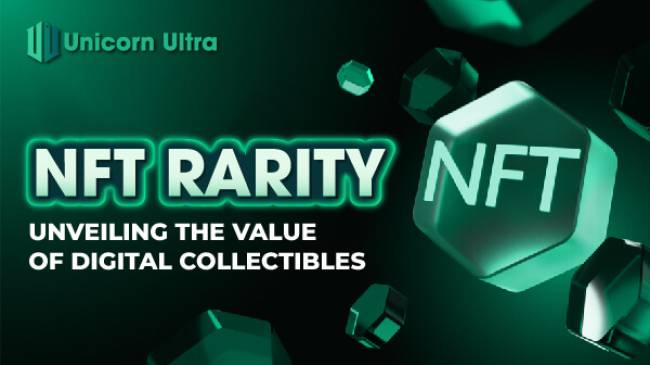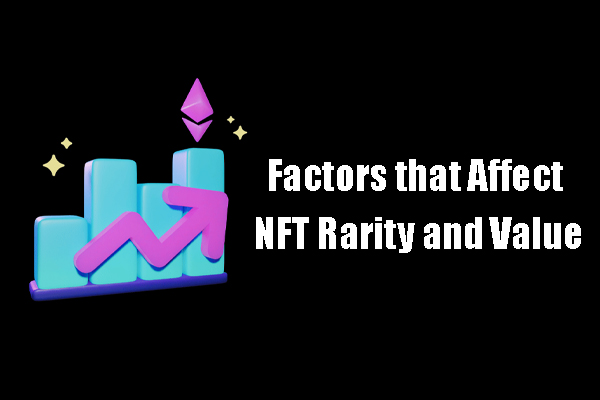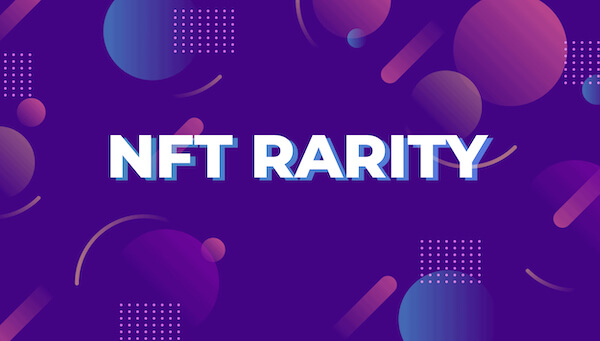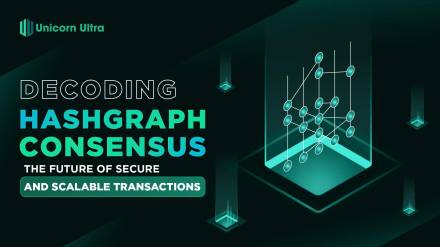Table of Contents
What is NFT Rarity?
NFT rarity is an indication of the uniqueness or scarcity of an NFT within a specific collection. Rarity plays a crucial role in determining the value of an NFT, and collectors are often willing to pay a premium for NFTs that are rare and one-of-a-kind. Factors contributing to NFT rarity include the quantity of editions, characteristics, and attributes associated with the NFT.

Elements Influencing NFT Rarity and Worth
While traits play a crucial role in determining an NFT's rarity, there are other factors that also influence its value. The creator, historical significance, and overall demand for a particular NFT are equally significant considerations.
Scarcity of the Item
The rarity of an NFT is closely tied to its scarcity within the blockchain network. NFTs can be issued in limited quantities, such as a series of only 10 artworks or cards. The lower the number of available copies, the higher the rarity, and subsequently, the higher the perceived value in the marketplace.
Historical Significance
The historical significance of an NFT can elevate its rarity and value. NFTs associated with notable events or owned by renowned individuals gain special importance. For instance, an NFT representing the first-ever digital artwork created by a famous artist would be considered exceptionally rare and valuable due to its historical context.
How is NFT Rarity Calculated?

If the NFT you've minted possesses rare traits, it's clear that you won't be selling it for the same price as a common NFT. This is why it's important to determine the NFT's rarity and assess its fair market value compared to the rest of the collection.
There are several methods to calculate NFT rarity, and there isn't a universally recognized industry standard. One of the most commonly used methods for calculating NFT rarity includes:
- Average Trait Rarity
- Trait Rarity Ranking
- Statistical Rarity
- NFT Rarity Score
Calculating NFT Rarity Using Average Trait Rarity
The most straightforward method for determining NFT rarity is the average trait rarity approach. This method involves summing the percentages of each trait and dividing the total by the number of traits within the collection. Let's apply this to the most recent Bored Ape you've encountered:
((13+1+5+2+0.46+3+1)/7)=3.63%
This NFT is relatively rare. However, this method has its limitations as it is not highly accurate in representing the rarity of the rarest traits. It primarily reflects the overall rarity of the NFT and does not account for the rarity of its most exceptional trait. Consequently, the average trait rarity calculation is not commonly used.
NFT Rarity Assessment
Many NFT rarity calculators employ a unique approach that considers both the rarity of individual attributes and the overall rarity of an NFT. For instance, rarity.tools utilizes the following formula to calculate the rarity score for an individual NFT:
[Rarity Score for a Trait Value] = 1 / ([Number of Items with that Trait Value] / [Total Number of Items in the Collection])
These individual trait rarity scores are then aggregated to yield the overall rarity score for your NFT. A higher score indicates a rarer NFT.
Statistical Rarity
Statistical rarity calculates a rarity score by multiplying the statistical rarity of each trait an NFT possesses. This approach operates in a manner similar to the average trait rarity method. However, this method tends to overemphasize an NFT's overall rarity.
Rarity Ranking by Traits
Trait rarity ranking is a technique that assesses the rarity of an NFT by its scarcest trait. For example, if a token possesses six common traits and one legendary trait, this method categorizes the NFT as legendary. It then proceeds to rank the NFT against others based on its rarest trait.
However, a drawback of this approach is its exclusive focus on the rarest trait. For instance, an NFT with one legendary trait, two uncommon traits, and three common traits is treated the same as another NFT with just one legendary trait and all other traits being common. This narrow focus on a single trait is highly inefficient and fails to accurately gauge the token's true market value.
NFT Rarity: A Driving Force in the Marketplace

The rarity of an NFT plays a vital role in shaping the dynamics of the digital collectibles market. Collectors are drawn to the exclusivity and uniqueness offered by rare NFTs, and this demand often results in significant price appreciation. Rarity also adds an element of prestige and bragging rights to the owners, as they possess something truly scarce and special.
Conclusion
In conclusion, what is NFT rarity? It is the key that unlocks the potential for immense value within the world of digital collectibles. As NFTs continue to captivate the art, gaming, and entertainment industries, understanding rarity becomes vital for collectors and investors. The convergence of scarcity, historical significance, and methods of calculation coalesces to shape the uniqueness of each NFT, driving the vibrant and ever-evolving marketplace.
Embracing the concept of rarity will undoubtedly enrich our appreciation of NFTs as more than just digital assets but as tokens that hold cultural, emotional, and financial significance in the digital age.
I hope this U2U article will be helpful to you. Please follow our channels to stay updated with the latest information in the market.






